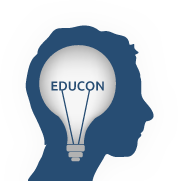The Museum is the Project - opening historiography in the PBL context.
If students are to be asked to engage with historical content at the historiographic level in colleges and universities, then it is the responsibility of the high school curriculum to prepare for these challenges. Further, beyond any sequential responsibility, students must learn to think in the historiographical context if they are to ever view the subject as more than a compilation of names, dates, and events. Knowing to engage with historiography is to know that narrative and argumentation create “truth.” Nothing seems more essential in our present cultural moment.
The question is then how to incorporate historiographical work into the high school context, without necessarily relying on the oft too complex work that academic historians produce on the subject. Surely, practice with reading and understanding advanced text is important, but other entry points are necessary. Enter the museum. Most people engage with museums in the same way. Museums are explored and the objects on display are viewed. Sometimes the accompanying information is read, but always treated as gospel. Museums have value in this way: there is something to be said for engaging with historically relevant objects in person.
However, this surface-level interaction does not engage with museums at their most substantively rich levels. In any given history curriculum, most museum field trips are to historical sites and anthropological museums. These museums harbor complicated historical legacies - often resting on collections built on principles of colonialism. Instead of simply viewing the artifacts within these museums, students are better served by critiquing the museums themselves. Students should engage with museums by analyzing the particular narratives that the museums themselves build. By studying the history and choices of the museum itself, students can engage in any of a number of projects that make historiographical thought urgently relevant.
In the past three years, I have engaged with two Philadelphia area museums - Eastern State Penitentiary and the University of Pennsylvania Museum of Archaeology and Anthropology - in developing critical museum curricula. Students have engaged in projects critiquing extant museum galleries and building their own examples. Students have engaged with themes of appropriation, narrative power, colonial fetishization, and culturally sensitive display.
Conversational Practice
I seek to engage diverse educators in thinking deeply about the role of the museum as a worthy partner in PBL. We will brainstorm different conceptions of museum purpose and students’ roles as critic, observer, and learner. I hope that the presentation will expand the idea of museum learning for all involved. The presentation will include a representative from the Penn Museum, a curriculum specialist from ESP, and students from SLA@Beeber.
-
NancyLee BergeyUPenn GSE
-
Diana PottsScience Leadership Academy Middle School
-
Michael McCabeCommunity - Learning - Design Corporation, Inc
-
Ryan ThomasGCU
-
Peggy GeorgeClassroom 2.0 LIVE
-
Colleen BetrusNaples CSD
-
Amy StolarskyEast Leyden High School
-
Christopher RogersEdcamp Foundation
-
Wendy EiteljorgThe Shipley School
-
Terri InloesAcademy School District 20
-
Melanie BarkerCollegiate School
-
Leah RobertsonNortheast Academy for Aerospace and Advanced Technologies
-
John FladdDeerfield Community School
-
Peter RaymondSolveOS
-
Jeffrey McClurkenUniversity of Mary Washington
-
Charles MoricleTimberview Middle School
 EduCon 2018
EduCon 2018
No comments have been posted yet.
Log in to post a comment.